�
Advances in Pattern Recognition
For other titles published in this series, go to
http://www.springer.com/series/4205
Stan Z. Li
Markov Random Field
Modeling in Image Analysis
Third Edition
1 3
�
Stan Z. Li
Center for Biometrics and Security Research &
National Laboratory of Pattern Recognition
Institute of Automation
Chinese Academy of Science
Beijing 100190, China
Stan.ZQ.Li@gmail.com
Series editor
Professor Sameer Singh, PhD
Research School of Informatics, Loughborough University, Loughborough, UK
ISBN: 978-1-84800-278-4
DOI: 10.1007/978-1-84800-279-1
e-ISBN: 978-1-84800-279-1
Advances in Pattern Recognition Series ISSN 1617-7916
British Library Cataloguing in Publication Data
A catalogue record for this book is available from the British Library
Library of Congress Control Number: 2008943235
c Springer-Verlag London Limited 2009
Apart from any fair dealing for the purposes of research or private study, or criticism or review, as per-
mitted under the Copyright, Designs and Patents Act 1988, this publication may only be reproduced,
stored or transmitted, in any form or by any means, with the prior permission in writing of the publish-
ers, or in the case of reprographic reproduction in accordance with the terms of licences issued by the
Copyright Licensing Agency. Enquiries concerning reproduction outside those terms should be sent to
the publishers.
The use of registered names, trademarks, etc. in this publication does not imply, even in the absence of a
specific statement, that such names are exempt from the relevant laws and regulations and therefore free
for general use.
The publisher makes no representation, express or implied, with regard to the accuracy of the information
contained in this book and cannot accept any legal responsibility or liability for any errors or omissions
that may be made.
Printed on acid-free paper
Springer Science+Business Media
springer.com
�
In Memory of My Mother
v
�
“An excellent book — very thorough and very clearly written.”
— Stuart Geman
“I have found the book to be a very valuable reference. I am very
impressed by both the breadth and depth of the coverage. This
must have been a truly monumental undertaking.”
— Charles A. Bouman
vii
�
Foreword by Anil K. Jain
The objective of mathematical modeling in image processing and computer
vision is to capture the intrinsic character of the image in a few parame-
ters so as to understand the nature of the phenomena generating the image.
Models are also useful to specify natural constraints and general assump-
tions about the physical world; such constraints and assumptions are neces-
sary to solve the “inverse” problem of three-dimensional scene interpretation
given two-dimensional image(s) of the scene. The introduction of stochastic
or random field models has led to the development of algorithms for image
restoration, segmentation, texture modeling, classification, and sensor fusion.
In particular, Gibbs and Markov random fields for modeling spatial context
and stochastic interaction among observable quantities have been quite useful
in many practical problems, including medical image analysis and interpreta-
tion of remotely sensed images. As a result, Markov random field models have
generated a substantial amount of excitement in image processing, computer
vision, applied statistics, and neural network research communities.
This monograph presents an exposition of Markov random fields (MRF’s)
that is likely to be extensively used by researchers in many scientific disci-
plines. In particular, those investigating the applicability of MRF’s to process
their data or images are bound to find its contents very useful. The main fo-
cus of the monograph, however, is on the application of Markov random fields
to computer vision problems such as image restoration and edge detection in
the low-level domain, and object matching and recognition in the high-level
domain. Using a variety of examples, the author illustrates how to convert a
specific vision problem involving uncertainties and constraints into essentially
an optimization problem under the MRF setting. In doing so, the author in-
troduces the reader to the various special classes of MRF’s, including MRF’s
on the regular lattice (e.g., auto-models and multilevel logistic models) that
are used for low-level modeling and MRF’s on relational graphs that are used
for high-level modeling.
The author devotes considerable attention to the problems of parameter
estimation and function optimization, both of which are crucial in the MRF
paradigm. Specific attention is given to the estimation of MRF parameters
in the context of object recognition, and to the issue of algorithm selection
ix
�
x
Foreword by Anil K. Jain
for MRF-based function optimization. Another contribution of the book is
a study on discontinuities, an important issue in the application of MRF’s
to image analysis. The extensive list of references, high-level descriptions of
algorithms, and computational issues associated with various optimization
algorithms are some of the attractive features of this book.
On the whole, the contents of this monograph nicely complement the
material in Kindermann and Snell’s book Markov Random Fields and Their
Applications and Chellappa and Jain’s edited volume entitled Markov Ran-
dom Fields: Theory and Applications. In my opinion, the main contribution
of this book is the manner in which significant MRF-related concepts are
lucidly illustrated via examples from computer vision.
Anil K. Jain
East Lansing, Michigan
June 8, 1995
�
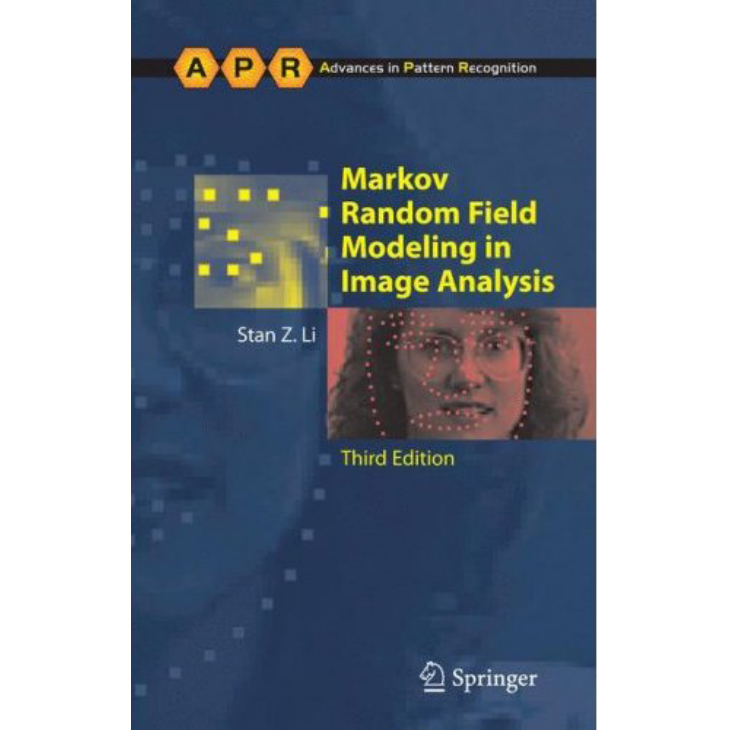
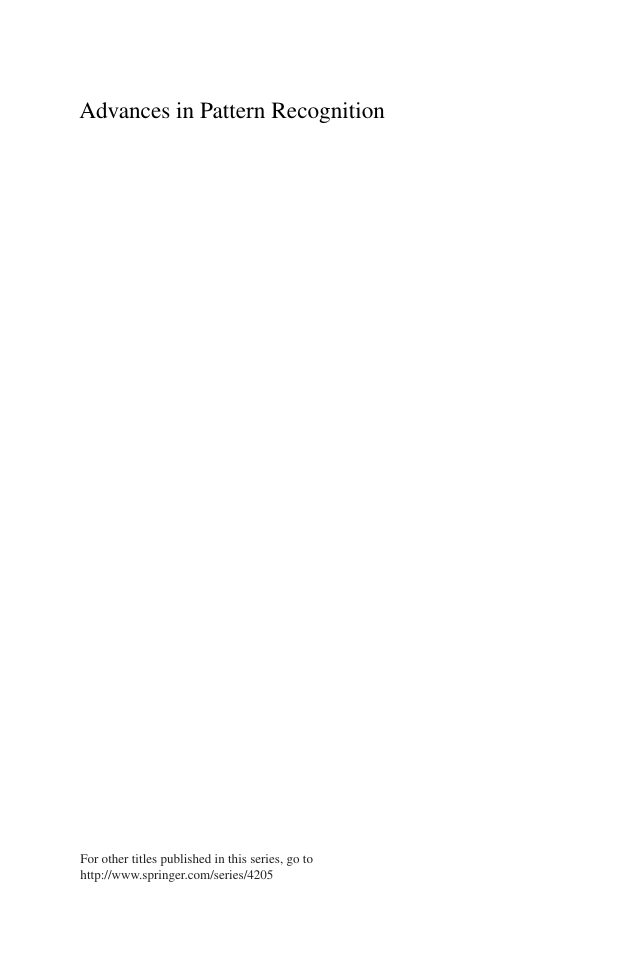
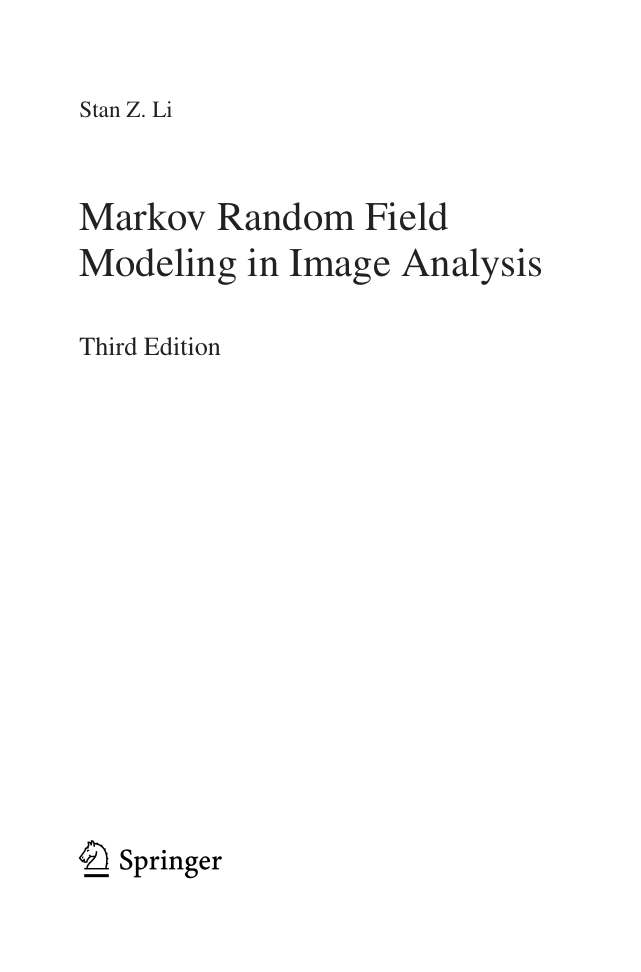



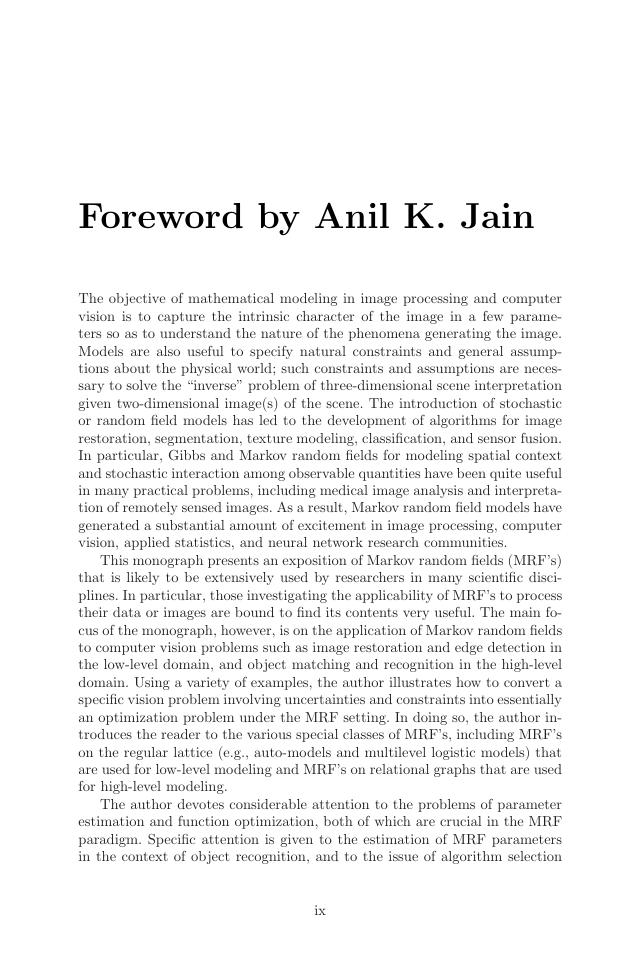
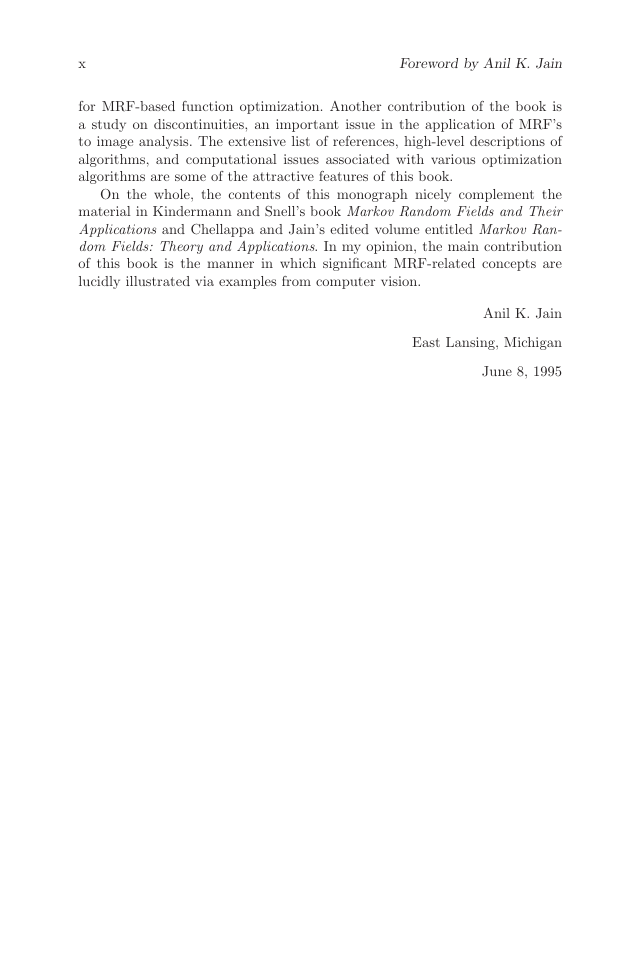








 2023年江西萍乡中考道德与法治真题及答案.doc
2023年江西萍乡中考道德与法治真题及答案.doc 2012年重庆南川中考生物真题及答案.doc
2012年重庆南川中考生物真题及答案.doc 2013年江西师范大学地理学综合及文艺理论基础考研真题.doc
2013年江西师范大学地理学综合及文艺理论基础考研真题.doc 2020年四川甘孜小升初语文真题及答案I卷.doc
2020年四川甘孜小升初语文真题及答案I卷.doc 2020年注册岩土工程师专业基础考试真题及答案.doc
2020年注册岩土工程师专业基础考试真题及答案.doc 2023-2024学年福建省厦门市九年级上学期数学月考试题及答案.doc
2023-2024学年福建省厦门市九年级上学期数学月考试题及答案.doc 2021-2022学年辽宁省沈阳市大东区九年级上学期语文期末试题及答案.doc
2021-2022学年辽宁省沈阳市大东区九年级上学期语文期末试题及答案.doc 2022-2023学年北京东城区初三第一学期物理期末试卷及答案.doc
2022-2023学年北京东城区初三第一学期物理期末试卷及答案.doc 2018上半年江西教师资格初中地理学科知识与教学能力真题及答案.doc
2018上半年江西教师资格初中地理学科知识与教学能力真题及答案.doc 2012年河北国家公务员申论考试真题及答案-省级.doc
2012年河北国家公务员申论考试真题及答案-省级.doc 2020-2021学年江苏省扬州市江都区邵樊片九年级上学期数学第一次质量检测试题及答案.doc
2020-2021学年江苏省扬州市江都区邵樊片九年级上学期数学第一次质量检测试题及答案.doc 2022下半年黑龙江教师资格证中学综合素质真题及答案.doc
2022下半年黑龙江教师资格证中学综合素质真题及答案.doc